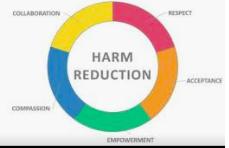#Reprinted with permission. Dr. Singer's original article can be found here.
The Health and Medicine panel of the National Academy of Sciences, Engineering and Medicine (NASEM) released its report Opportunities to Improve Opioid Use Disorder and Infectious Disease Services on January 23. The panel consisted of academics, medical professionals, epidemiologists, nurses, and health policy specialists. Among the panel’s recommendations were:
- Eliminate the mandatory “X‑waiver” requirement for health care practitioners wishing to prescribe buprenorphine for substance use disorder/withdrawal management, and removing limits on the number of patients that can be treated by a given practitioner.
- Allow methadone treatment to be prescribed in primary care settings.
- Assure that undergraduate and graduate medical education includes “practical, clinically relevant, harm‐reduction‐focused” training on opioid use disorder and infectious diseases assessment.
- Incorporate harm reduction strategies in clinical practice, including referral to syringe services programs (commonly referred to as “needle exchange” programs), and prescribing pre‐exposure HIV prophylaxis (PrEP) and post‐exposure prophylaxis (PEP).
- “States should lift the remaining bans on evidence‐based syringe services, offering syringe services at publicly funded health departments and allowing for independently operated syringe service programs.”
The report also had something to say about the unintended consequences of current policies toward opioid “misuse” and use disorder:
Even well‐intentioned policies have exacerbated the link between OUD and infectious disease. For instance, implementation of prescription drug monitoring programs and other measures to limit access to prescription opioids triggered a transition to heroin and, eventually, injection use among people who had become dependent on prescription pain relievers. At the same time, primary care clinics have not adequately screened, treated, and retained patients on treatment for SUD. The resulting increase in the number of people who inject drugs (and engage in high‐risk sexual behaviors in exchange for drugs) has also increased the overall risk of infectious disease outbreaks.
I have written on numerous occasions that the “X‑waiver” and other restrictions on buprenorphine should be repealed. I have argued here why the Drug Enforcement Administration’s current methadone clinic regime should be scrapped, and primary care providers be allowed to prescribe methadone to their patients with substance use disorder — as is done in Canada, the U.K., and Australia since the 1970s.
I recently argued in the pages of the San Francisco Chronicle that Prep and PEP should be available over‐the‐counter. The Cato Institute hosted a policy forum that included a discussion about state barriers to syringe services programs earlier this month. At the forum, U.S. Surgeon General Jerome Adams and University of Southern California Medical School Professor Ricky Bluthenthal argued for the removal of state barriers. You can view it here.
Last October, the Cato Institute hosted a conference on “Patients, Privacy, and PDMPs” that included a presentation by Columbia University researcher David Fink about the unintended consequences of prescription drug monitoring programs, including an increase in heroin use. You can view that here. And a little over a year ago, the Cato Institute published my policy analysis on harm reduction.
It is gratifying to see a prestigious organization like NASEM express similar views. NASEM provides a summary of the report’s highlights here.




